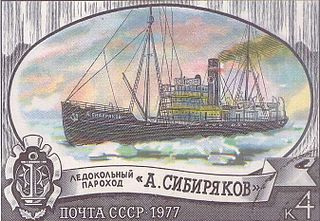 W
WA. Sibiryakov was a Soviet icebreaker which was active in the Russian Arctic during the 1930s. She was built in 1909 in Glasgow and was originally the Newfoundland sealing steamer Bellaventure. After being purchased by Russia in 1916, she was renamed A. Sibiryakov. Her Russian name was chosen in honour of Aleksandr Mikhaylovich Sibiryakov, an Imperial Russian gold mine proprietor. Sibiryakov financed explorations to Siberia, such as Adolf Erik Nordenskiöld's, and also took part in some expeditions of his own.
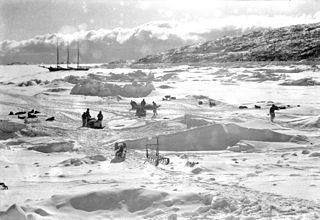 W
WA.W. Greely was a three-masted wooden schooner that became known for her role in the MacGregor Arctic Expedition, a privately funded expedition to the North Pole between July 1, 1937, and October 3, 1938.
 W
WThe first USS Advance was a brigantine in the United States Navy which participated in an arctic rescue expedition. Advance was built in 1847 as Augusta in New Kent County, Virginia and loaned to the Navy on 7 May 1850 by Mr. Henry Grinnell to participate in the search for Sir John Franklin's arctic expedition which had been stranded in the frozen north since 1846. After last-minute preparations, the ship, under the command of Lieutenant Edwin J. De Haven and in company with Rescue, put to sea from New York on 23 May 1850.
 W
WRV Akademik Fedorov is a Russian scientific diesel-electric research vessel, the flagship of the Russian polar research fleet. It was built in Rauma, Finland for the Soviet Union and completed on 8 September 1987. It started operations on 24 October 1987, in the USSR. The ship was named after a Soviet polar explorer, academician of the USSR Academy of Sciences Evgeny Fyodorov, who worked on the first Soviet manned drifting ice station North Pole-1.
 W
WAkademik Tryoshnikov is a Russian scientific diesel-electric research vessel, the flagship of the Russian polar research fleet.
 W
WHMS Alert was a 17-gun wooden screw sloop of the Cruizer class of the Royal Navy, launched in 1856 and broken up in 1894. She was the eleventh ship of the Royal Navy to bear the name, and was noted for her Arctic exploration work; in 1876 she reached a record latitude of 82° North. Alert briefly served with the US Navy, and ended her career with the Canadian Marine Service as a lighthouse tender and buoy ship.
 W
WThe America was a non-rigid airship built by Mutin Godard in France in 1906 for the journalist Walter Wellman's attempt to reach the North Pole by air. Wellman first conceived of using a balloon to fly to the pole during a failed polar attempt by boat and sledge from Svalbard in 1894. He then visited Paris to review the state of balloon technology but left disappointed by the lack of acceptable steering and propulsion capability. A decade later while at the 1905 Portsmouth Peace Conference he learned of recent innovations in French dirigible design and believed a solution might be at hand for his Arctic aerial plan. After receiving the backing of newspaper publisher Victor F. Lawson, the Wellman Chicago Record-Herald Polar Expedition was announced, and Wellman traveled to Paris in search of a suitable design and manufacturer. In the meantime a public company was established to raise the $US 250,000 required for the expedition and airship.
 W
WAntarctic was a Swedish steamship built in Drammen, Norway, in 1871. She was used on several research expeditions to the Arctic region and to Antarctica from 1898 to 1903. In 1895 the first confirmed landing on the mainland of Antarctica was made from this ship.
 W
WThe Antarctic Snow Cruiser was a vehicle designed from 1937 to 1939 under the direction of Thomas Poulter, intended to facilitate transport in Antarctica during the United States Antarctic Service Expedition (1939–41). The Snow Cruiser was also known as "The Penguin," "Penguin 1" or "Turtle" in some published material.
 W
WHMS Assistance was an Arctic discovery barque of the Royal Navy, and the sixth vessel to carry the name. She began in 1834 as the India-built merchant vessel Acorn. Her name was changed to Baboo. Under that name she transported coolies between Mauritius and India, and immigrants to South Australia. The Royal Navy purchased her in 1850 and named her HMS Assistance. Assistance participated in two Arctic expeditions before her crew abandoned her in the ice in 1854.
 W
WSS Bear was a dual steam-powered and sailing ship built with six-inch (15.2 cm)-thick sides which had a long life in various cold-water and ice-filled environs. She was a forerunner of modern icebreakers and had a diverse service life. According to the United States Coast Guard official website, Bear is described as "probably the most famous ship in the history of the Coast Guard."
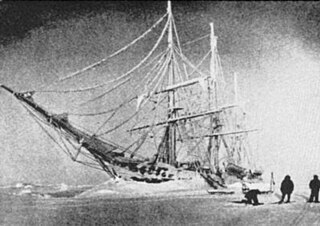 W
WBelgica was a barque-rigged steamship that was built in 1884 by Christian Brinch Jørgensen at Svelvik, Norway as the whaler Patria. In 1896, she was purchased by Adrien de Gerlache for conversion to a research ship, taking part in the Belgian Antarctic Expedition of 1897–1901, becoming the first ship to overwinter in the Antarctic. In 1902, she was sold to Philippe, Duke of Orléans and used on expeditions to the Arctic in 1905 and from 1907–09.
 W
WHMS Blossom was an 18-gun Cormorant-class sloop-of-war. She was built in 1806 and is best known for the 1825–1828 expedition under Captain Beechey to the Pacific Ocean. She explored as far north as Point Barrow, Alaska, the furthest point into the Arctic any non-Inuit had been at the time. She was finally broken up in 1848.
 W
WThe schooner Bowdoin was designed by William H. Hand, Jr., and built in 1921, in East Boothbay, Maine, at the Hodgdon Brothers Shipyard now known as Hodgdon Yachts. She is the only American schooner built specifically for Arctic exploration, and was designed under the direction of explorer Donald B. MacMillan. She has made 29 trips above the Arctic Circle in her life, three since she was acquired by the Maine Maritime Academy in 1988. She is currently owned by the Maine Maritime Academy, located in Castine, Maine, and is used for their sail training curriculum. She is named for Bowdoin College.
 W
WSS Chelyuskin was a Soviet steamship reinforced to navigate through polar ice that became ice-bound in Arctic waters during navigation along the Northern Maritime Route from Murmansk to Vladivostok. The expedition's task was to determine the possibility to travel by non-icebreaker through the Northern Maritime Route in a single navigation season.
 W
WHMS Discovery was a wooden screw storeship, formerly the whaling ship Bloodhound. She was purchased in 1874 for the British Arctic Expedition of 1875–1876 and was sold in 1902.
 W
WEffie M. Morrissey is a schooner skippered by Robert Bartlett that made many scientific expeditions to the Arctic, sponsored by American museums, the Explorers Club and the National Geographic Society. She also helped survey the Arctic for the United States Government during World War II. She is currently designated by the United States Department of the Interior as a National Historic Landmark as part of the New Bedford Whaling National Historical Park. She is the State Ship of Massachusetts.
 W
WHMS Enterprise was an Arctic discovery ship laid down as a merchant vessel and purchased in 1848 before launch to search for Sir John Franklin's lost expedition. She made two Arctic voyages before becoming a coal depot, and was finally sold in 1903. She was the tenth Enterprise to serve in the Royal Navy.
 W
WHMS Erebus is a Hecla-class bomb vessel constructed by the Royal Navy in Pembroke dockyard, Wales, in 1826. The vessel was the second in the Royal Navy named after Erebus, the dark region of Hades in Greek mythology.
 W
WThe Fox was an 1854 steam yacht commanded by Leopold McClintock on a privately funded 1857–1859 expedition to the North American Arctic Archipelago to search for clues about the fate of Franklin's lost expedition.
 W
WFram ("Forward") is a ship that was used in expeditions of the Arctic and Antarctic regions by the Norwegian explorers Fridtjof Nansen, Otto Sverdrup, Oscar Wisting, and Roald Amundsen between 1893 and 1912. It was designed and built by the Scottish-Norwegian shipwright Colin Archer for Fridtjof Nansen's 1893 Arctic expedition in which the plan was to freeze Fram into the Arctic ice sheet and float with it over the North Pole.
 W
WHMS Fury was a Hecla-class bomb vessel of the British Royal Navy.
 W
WThe icebreaker Fyodor Litke was active in the Soviet era in the Arctic, until the late 1950s. It was built in 1909 in England for the Saint Lawrence River service and initially named CGC Earl Grey after Albert Grey, Governor General of Canada. After four years in Canada it was sold to the Russian government and eventually renamed Fyodor Litke in honour of the Arctic explorer Fyodor Petrovich Litke.
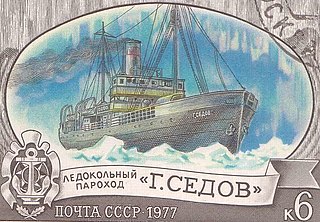 W
WThe Georgiy Sedov was a Soviet ice-breaker fitted with steam engines. She was originally the Newfoundland sealing steamer Beothic and was renamed after Russian Captain and Polar explorer Georgy Yakovlevich Sedov.
 W
WHMS Griper was a Bold-class gun-brig of the British Royal Navy, built in 1813 by Mark Williams and John Davidson at Hythe. She participated in the 1819 expedition to the Arctic led by William Parry, made a voyage to Greenland and Norway in 1823, and took part in Parry's third expedition in 1824 as a support ship. Her crew in 1819, 1823, or 1824, qualified for the "Arctic Medal", which the Admiralty issued in 1857. She was eventually broken up in 1868.
 W
WA Halkett boat is a type of lightweight inflatable boat designed by Lt Peter Halkett (1820–1885) during the 1840s. Halkett had long been interested in the difficulties of travelling in the Canadian Arctic, and the problems involved in designing boats light enough to be carried over arduous terrain, but robust enough to be used in extreme weather conditions.
 W
WHMS Hecla was a Royal Navy Hecla-class bomb vessel launched in 1815. Like many other bomb vessels, she was named for a volcano, in this case Hekla in Iceland. She served at the Bombardment of Algiers. Subsequently she took part in three expeditions to the Arctic. She then served as a survey vessel on the coast of West Africa until she was sold in 1831. She became a merchantman and in 1834 a Greenland whaler. She was wrecked in 1840.
 W
WHMS Investigator was a merchant ship purchased in 1848 to search for Sir John Franklin's ill-fated Northwest Passage expedition. She made two voyages to the Arctic and had to be abandoned in 1853, after becoming trapped in the ice.
 W
WIsabel was a vessel intended to be used in four planned expeditions in search of the fate of Franklin's lost expedition between 1852 and 1856, although she only managed to reach the Arctic once, in 1852. All of these expeditions were sponsored by Lady Jane Franklin who also owned the vessel over most of this period, and expended much money for little result.
 W
WThe Italia was a semi-rigid airship belonging to the Italian Air Force. It was used by Italian engineer and General Umberto Nobile in his second series of flights around the North Pole. It crashed in 1928, with one confirmed fatality from the crash, one fatality from exposure while awaiting rescue, and the death of six crew members who were trapped in the still-airborne envelope. At the end of the rescue operations there were 17 dead.
 W
WUSS Jeannette was a naval exploration vessel which, commanded by George W. De Long, undertook the Jeannette expedition of 1879–1881 to the Arctic. After being trapped in the ice and drifting for almost two years, the ship and her crew of 33 were released from the ice, then trapped again, crushed and sunk some 300 nautical miles north of the Siberian coast. The entire crew survived the sinking, but 11 died while sailing towards land in a small cutter. The others reached Siberia, but nine subsequently perished in the Lena Delta, including De Long.
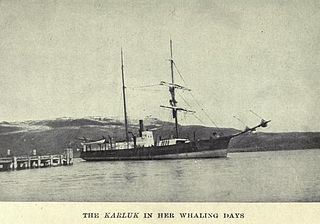 W
WKarluk was an American-built brigantine which, after many years' service as a whaler, was acquired by the Canadian government in 1913 to act as flagship to the Canadian Arctic Expedition. While on her way to the expedition's rendezvous at Herschel Island, Karluk became trapped in the Arctic pack ice and, after drifting for several months, was crushed and sank in January 1914. Of the 25 aboard, eleven died, either during the attempts to reach land by marching over the ice, or after arrival at the temporary refuge of Wrangel Island.
 W
WKing & Winge was one of the most famous ships ever built in Seattle, Washington, United States. Built in 1914, in the next 80 years she had participated in a famous Arctic rescue, been present at a great maritime tragedy, and been employed as a halibut schooner, a rum runner, a pilot boat, a yacht, and a crabber. She sank in high seas, without loss of life, in 1994.
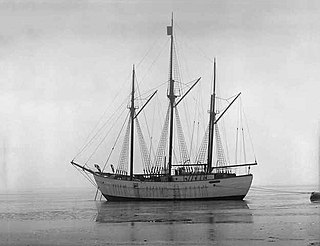 W
WMaud, named for Queen Maud of Norway, was a ship built for Roald Amundsen for his second expedition to the Arctic. Designed for his intended voyage through the Northeast Passage, the vessel was built in Asker, a suburb of the capital, Oslo.
 W
WMir is a self-propelled deep-submergence vehicle. The project was initially developed by the USSR Academy of Sciences along with Design Bureau Lazurith. Later two vehicles were ordered from Finland. The Mir 1 and Mir 2, delivered in 1987, were designed and built by the Finnish company Rauma-Repola's Oceanics subsidiary. The project was carried out under the supervision of constructors and engineers of the Shirshov Institute of Oceanology.
 W
WUSS Nautilus (SSN-571) was the world's first operational nuclear-powered submarine and the first submarine to complete a submerged transit of the North Pole on 3 August 1958. Her initial commanding officer was Eugene Parks "Dennis" Wilkinson, a widely respected naval officer who set the stage for many of the protocols of today's Nuclear Navy, and who had a storied career during military service and afterwards.
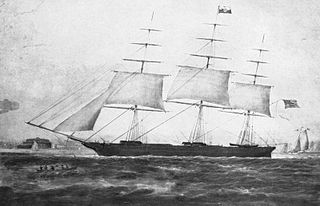 W
WUSS Nightingale (1851) was originally the tea clipper and slave ship Nightingale, launched in 1851. USS Saratoga captured her off Africa in 1861; the United States Navy then purchased her.
 W
WThe Norge was a semi-rigid Italian-built airship that carried out the first verified trip of any kind to the North Pole, an overflight on 12 May 1926. It was also the first aircraft to fly over the polar ice cap between Europe and America. The expedition was the brainchild of polar explorer and expedition leader Roald Amundsen, the airship's designer and pilot Umberto Nobile and American adventurer and explorer Lincoln Ellsworth who, along with the Aero Club of Norway, financed the trip, which was known as the Amundsen-Ellsworth 1926 Transpolar Flight.
 W
WUSS Polaris, originally called the America, was an 1864-screw steamer procured by the Union Navy as USS Periwinkle during the final months of the American Civil War. She served the Union Navy's struggle against the Confederate States as a gunboat.
 W
WThe first USS Rescue was a brig in service with the United States Navy.
 W
WHMS Resolute was a mid-19th-century barque-rigged ship of the British Royal Navy, specially outfitted for Arctic exploration. Resolute became trapped in the ice and was abandoned in 1854. Recovered by an American whaler, she was returned to Queen Victoria in 1856. Timbers from the ship were later used to construct the Resolute desk which was presented to the President of the United States and is currently located in the White House Oval Office.
 W
WUSS Rodgers was an American 420-ton steam whaler. Launched in 1879 as Mary and Helen, she was acquired by the United States Navy after Congress—besieged by constituents as well as government agencies—appropriated $175,000 "to enable the Secretary of the Navy to charter, or purchase, equip, and supply a vessel for the prosecution of a search for the USS Jeannette and such other vessels as might be found to need assistance during said cruise; provided that the vessel be wholly manned by volunteers from the Navy." The "other vessels" of most immediate concern were two whalers, Vigilant and Mount Wollaston missing in the Arctic Ocean since 1879.
 W
WSS Roosevelt was an American steamship of the early 20th century. She was designed and constructed specifically for Robert Peary′s polar exploration expeditions, and she supported the 1908 expedition in which he claimed to have discovered the North Pole.
 W
WUSS Sargo (SSN-583), a Skate-class nuclear-powered submarine, was the second ship of the United States Navy to be named for the sargo, a food and game fish of the porgy family, inhabiting coastal waters of the southern United States.
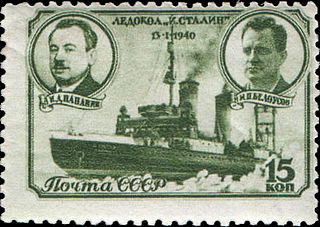 W
WThe Sibir was the first Soviet icebreaker built at a domestic shipyard.
 W
WUSS Skate (SSN-578), the third submarine of the United States Navy named for the skate, a type of ray, was the lead ship of the Skate class of nuclear submarines. She was the third nuclear submarine commissioned, the first to make a completely submerged trans-Atlantic crossing, and the second submarine to reach the North Pole and the first to surface there.
 W
WThe Taymyr was an icebreaking steamer of 1200 tons built for the Russian Imperial Navy at St. Petersburg in 1909. It was named after the Taymyr Peninsula.
 W
WHMS Terror was a specialized warship and a newly developed bomb vessel constructed for the Royal Navy in 1813. She participated in several battles of the War of 1812, including the Battle of Baltimore with the bombardment of Fort McHenry. She was converted into a polar exploration ship two decades later, and participated in George Back's Arctic expedition of 1836–1837, the successful Ross expedition to the Antarctic of 1839 to 1843, and Sir John Franklin's ill-fated attempt to force the Northwest Passage in 1845, during which she was lost with all hands along with HMS Erebus.
 W
WThe Thomas Corwin was a United States revenue cutter and subsequently a merchant vessel. These two very different roles both centered on Alaska and the Bering Sea. In 1912, Frank Willard Kimball wrote: "The Corwin has probably had a more varied and interesting career than any other vessel which plies the Alaskan waters."
 W
WSS Vega was a Swedish barque, built in Bremerhaven, Germany in 1872. The Vega was the first ship to complete a voyage through the Northeast Passage, and the first vessel to circumnavigate the Eurasian continent, during the Vega expedition. Initially a troubled enterprise, the successful expedition is considered to be among the highest achievements in the history of Swedish science.
 W
WThe last voyage of the Karluk, flagship of the Canadian Arctic Expedition of 1913–16, ended with the loss of the ship in the Arctic seas, and the subsequent deaths of nearly half her complement of 25. In August 1913, Karluk, a brigantine formerly used as a whaler, became trapped in the ice while sailing to a rendezvous point at Herschel Island. After a long drift across the Beaufort and Chukchi seas, in January 1914 the ship was crushed and sunk. In the ensuing months, the crew and expedition staff struggled to survive, first on the ice and later on the shores of Wrangel Island. In all, eleven men died before rescue. The Canadian Arctic Expedition was organised under the leadership of Canadian anthropologist Vilhjalmur Stefansson, and had both scientific and geographic purposes. Shortly after Karluk was trapped, Stefansson and a small party left the ship, stating that they intended to hunt for caribou. However, the ice carried Karluk westwards, far from the hunting party who found it impossible to return to the ship. Stefansson reached land and then devoted himself to the expedition's scientific objectives, leaving the crew and staff on board the ship under the charge of its captain, Robert Bartlett. After the sinking, Bartlett organised a march across the ice to Wrangel Island, 80 miles (130 km) away. Conditions were difficult and dangerous; two four-man parties were lost before the island was reached.
 W
WUSS Whale (SSN-638) was a Sturgeon-class submarine nuclear-powered attack submarine of the United States Navy. She was the second ship of that name, after the whale family of aquatic mammals.